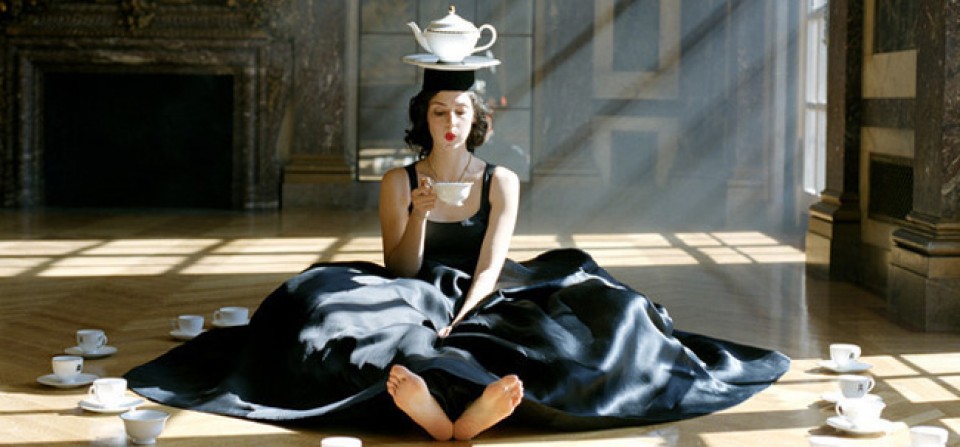Greetings, Fellow Austen Adorers!
Before the start of summer this year, I had not even the slightest idea that Jane Austen had written any other works besides her six glorious novels, which I have come to enjoy despite having been forced to read (one of) them throughout secondary school. (Emma is my favourite!) What a surprise it was to me, when I began reading some of her juvenilia for class, and found myself rocking with laughter and marking my book with pencilled “LOL”s every few pages. Here are a few gems that sent me into fits of hilarity (from “Frederic and Elfrida”):
Lovely and too charming Fair one, notwithstanding your forbidding Squint, your greazy tresses and your swelling Back, which are more frightfull than imagination can paint or pen describe, I cannot refrain from expressing my raptures, at the engaging Qualities of your Mind, which so amply atone for the Horror, with which your first appearance must ever inspire the unwary visitor” (Austen 52).
“The answer distressed her too much for her delicate Constitution. She accordingly fainted and was in such a hurry to have a succession of fainting fits, that she had scarcely patience enough to recover from one before she fell into another (Austen 57).
Austen’s satire and burlesque was evident in a way it had never been before, and I found myself wishing that the edition I was reading included all of her stories. This reading also inspired me to reread several of her novels (Emma, Pride and Prejudice, Northanger Abbey, Mansfield Park), in order to find further proof of Austen’s subtle subversion. When I informed my friend of this endeavour, he responded with, “Ugh, why? She supports the submission of women, I don’t like her.” Needless to say, I (told him that he was obviously an ignoramus and) tried to convince him that he really had to read her writing again, beginning with her juvenilia.
Austen’s juvenile writing is where I now feel it all began – my destiny and identity as a Janeite – and her employment of irony and sarcastic wit to mock the often ridiculous morals and values of the eighteenth and nineteenth century English aristocracy. It is even more astounding when one realizes that she began writing these short sarcastic tales at the tender age of eleven. It really makes me wonder, what was I doing at age eleven? Definitely not writing anything beyond the length of 200 word compositions, and not even thinking to question the politics of society as Austen did as a teenager! This, coupled with the fact that her juvenile stories remained in unpublished manuscript form until the mid-twentieth century, continues to captivate my interest, and ignites my desire to study Jane Austen’s unfinished manuscripts or drafts.
Such was my impetus then, when it came time to select a topic or writer for a final project involving the edition of a Romantic author’s manuscript, for choosing one that belonged to Jane Austen. Though it was a much longer piece of writing than I had expected to work with, I am happy to have chosen “Catharine, or the Bower” as the core of my digital edition, because it seems to fill the gap between Austen’s juvenile writing and her complete print novels. To me, it demonstrates the transition of Austen from a youthful satirist to a mature and critically thinking novelist, and even clarifies the presence of satire in her later novels. That is another driving force behind this literary venture – to prove to my (ex-) friend that Jane Austen is the opposite of what he believes her to be. I want to illustrate the ways in which Jane Austen is a feminist in her own right, by performing a close reading and analysis of satire in “Catharine, or the Bower.”
I have consequently attempted to produce my own critical edition of “Catharine, or the Bower,” complete with Annotations, a Critical Introduction, a Note on the Text, a contextual Appendices, and a Bibliography, with a lot of help from Google (“How To WordPress? How to Scribd? Lulz.”) and buckets of iced coffee. Because I am unrealistically ambitious, I also tried to include a Brief Biography and Writing Chronology of Jane Austen, and supplementary material in the form of Austen’s other juvenilia or unfinished manuscripts. These elements are hopefully easy to find and navigate throughout this digital interface: the three featured stories serve as some of the main tabs at the top of the site, and items pertaining to each one are found in a drop down menu that appears when the mouse is hovered above the story’s title. So, what are you waiting for? Go take a look! I hope you enjoy exploring my digital edition of Jane Austen’s “Catharine, or the Bower” as much as I enjoyed assembling it!
Happy reading, or, as Austen would write,
"Your Most Grateful Humble Servant,
Audrey."
Vancouver, August 2014 --
